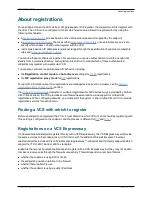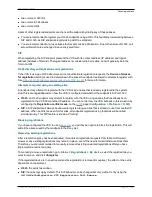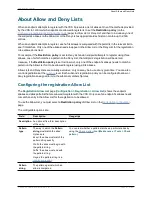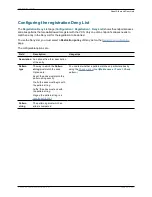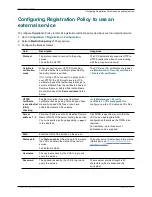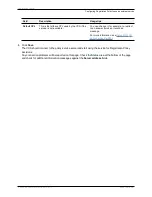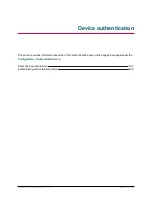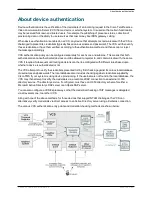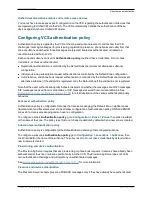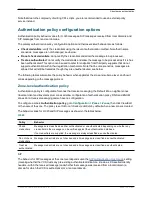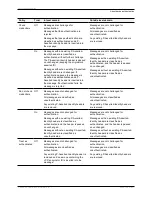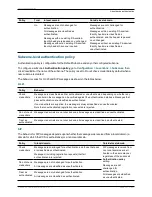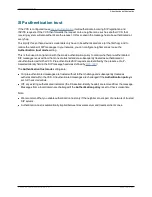
About registrations
For an endpoint to use the VCS as its H.323 gatekeeper or SIP registrar, the endpoint must first register with
the VCS. The VCS can be configured to control which devices are allowed to register with it by using the
following mechanisms:
n
a
device authentication
process based on the username and password supplied by the endpoint
n
a
registration restriction policy
that uses either
Allow Lists or Deny Lists
or an external policy service to
specify which aliases can and cannot register with the VCS
n
restrictions based on IP addresses and subnet ranges through the specification of subzone membership
rules and
subzone registration policies
You can use these mechanisms together. For example, you can use authentication to verify an endpoint’s
identity from a corporate directory, and registration restriction to control which of those authenticated
endpoints may register with a particular VCS.
You can also control some protocol-specific behavior, including:
n
the
Registration conflict mode
and
Auto discover
settings for
H.323
registrations
n
the
SIP registration proxy mode
for
SIP
registrations
For specific information about how registrations are managed across peers in a cluster, see the
Sharing
registrations across peers [p.166]
section.
In a
Unified Communications
deployment, endpoint registration for SIP devices may be provided by Unified
CM. In this scenario, the VCS provides secure firewall traversal and line-side support for Unified CM
registrations. When configuring domains, you must select the system - either
Unified CM
or
VCS
to provide
registration services for each domain.
Finding a VCS with which to register
Before an endpoint can register with a VCS, it must determine which VCS it can or should be registering with.
This setting is configured on the endpoint, and the process is different for
SIP
and
H.323
.
Registrations on a VCS Expressway
If a traversal-enabled endpoint registers directly with a VCS Expressway, the VCS Expressway will provide
the same services to that endpoint as a VCS Control, with the addition of firewall traversal. Traversal-
enabled endpoints include all Cisco TelePresence Expressway™ endpoints and third-party endpoints which
support the ITU H.460.18 and H.460.19 standards.
Endpoints that are not traversal-enabled can still register with a VCS Expressway, but they may not be able
to make or receive calls through the firewall successfully. This will depend on a number of factors:
n
whether the endpoint is using SIP or H.323
n
the endpoint’s position in relation to the firewall
n
whether there is a NAT in use
n
whether the endpoint is using a public IP address
Cisco VCS Administrator Guide (X8.1.1)
Page 93 of 507
Registration control
About registrations















